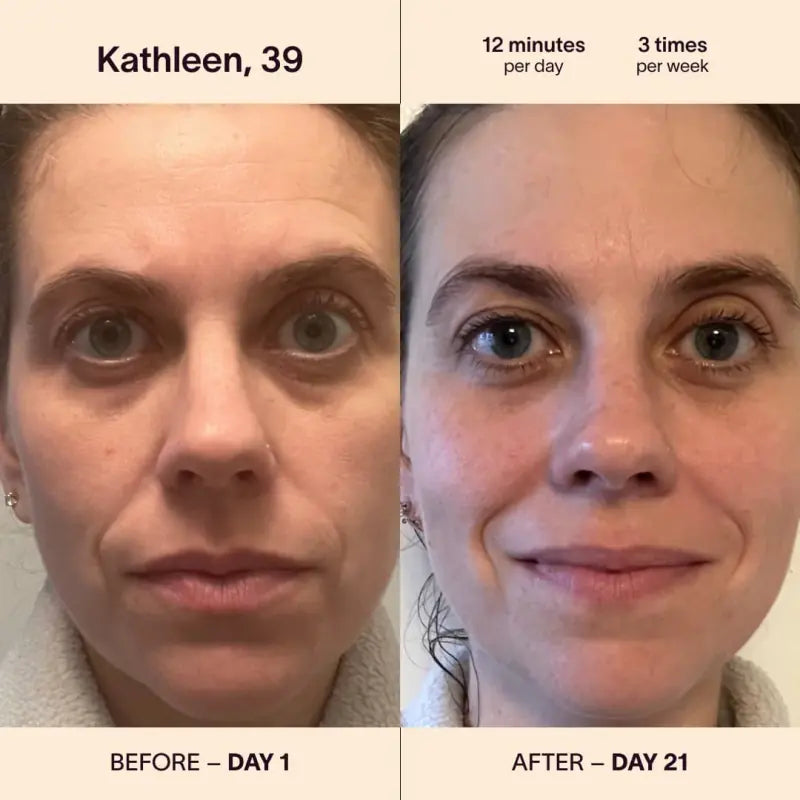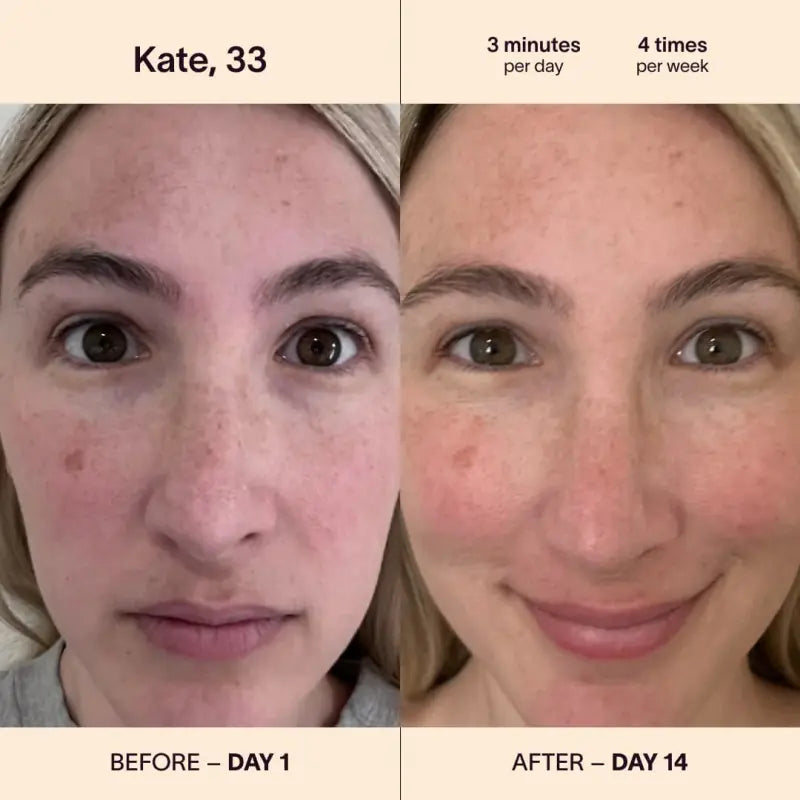In the ever-evolving landscape of skincare,
red light therapy for face treatments has emerged as a beacon of hope. Are you seeking effective ways on
how to remove blemishes and dark spots? Let’s dive into this captivating world of light. Centuries ago, sunlight was the only source of light therapy. But, with advancements, specific colors or wavelengths became usable for therapeutic purposes. The red light facial wand, for instance, has its roots in those early discoveries. Fast forward to today, and we have a wide range of devices tailored for at-home red light therapy.

Science Behind Red Light Therapy's Efficacy for Blemishes
The Magic of Wavelengths
Every wavelength carries its own set of benefits. When we talk about red light therapy for scars or other blemishes, it is essential to focus on the specific wavelengths the device emits. Interestingly, there's also red-light-blue light therapy, which combines the benefits of both light colors. While red light often targets deeper skin concerns, blue light is famous for combating acne.
Relationship Between Wavelengths and Skin Penetration
The depth to which light penetrates our skin is directly linked to its wavelength. Longer wavelengths, like those from a
red light wand, penetrate deeper, addressing issues beneath the skin’s surface. In contrast, shorter wavelengths, like the
blue light for acne, remain close to the skin's outer layer, proving beneficial for surface-level concerns.
Benefits of Different Wavelengths in Combatting Blemishes
Shorter Wavelengths and Surface Blemishes
Shorter wavelengths, particularly those in the blue light spectrum, have proven to be exceptionally beneficial for addressing skin issues that manifest primarily on the surface. If you find yourself troubled by redness, shallow acne scars, or similar surface-level skin imperfections, investing in devices that utilize these wavelengths might be the solution you've been seeking. What shorter wavelength does:
-
Target Surface Bacteria - Devices that emit blue light are specifically engineered to target and eliminate bacteria on the skin's surface. This technology capitalizes on the antibacterial properties of blue wavelengths, which penetrate the skin to disrupt the life cycle of bacteria that contribute to acne development. By effectively reducing these surface bacteria, the likelihood of acne outbreaks is minimized, promoting a healthier and clearer skin surface. Regular use of blue light therapy can be a proactive measure in maintaining a blemish-free appearance.
-
Combat Sudden Outbreaks - For those prone to sudden and unexpected acne flare-ups, utilizing devices that emit shorter wavelengths can be particularly beneficial. These wavelengths are designed to quickly penetrate the skin and target the underlying causes of these outbreaks. The prompt action of the light helps reduce inflammation and clear up acne much faster than traditional methods, making this technology indispensable for individuals seeking to maintain a consistently clear complexion. It's a strategic solution for managing and preventing severe acne incidents that can otherwise be unpredictable and difficult to control.
-
Address Visible Issues - Dealing with visible skin issues such as redness and shallow acne scars can be frustrating and often leads to self-consciousness. Light therapy, particularly the use of red light, is effective in addressing these concerns. The red wavelengths are known for their healing properties, penetrating deeper into the skin to promote circulation and collagen production. This not only helps reduce visible redness but also aids in the repair of minor scarring, leading to a more even and refined skin tone. Over time, this treatment can transform the texture and overall appearance of the skin, providing a boost in confidence and satisfaction with one’s appearance.
These advanced light therapies signify a leap forward in dermatological treatments, offering non-invasive solutions to persistent skin problems. By understanding and utilizing the specific wavelengths associated with each type of light therapy, individuals can achieve targeted results and enjoy a healthier, more radiant complexion.
Longer Wavelengths and Deep-seated Imperfections
When it comes to skin issues that run deeper than the surface, longer wavelengths, often associated with red light therapy, provide a potent solution. Issues such as cystic acne or profound scars require a more in-depth approach, as they affect the skin's deeper layers. What longer wavelength does:
-
Penetrate Deeper Layers - As mentioned previously, red light therapy utilizes longer wavelengths capable of penetrating the deeper strata of the skin. This is critical because many skin problems, such as under-surface acne or deep-rooted scars, originate below the outermost layers of the skin. By reaching these deeper areas, the therapy ensures that it addresses issues at its source, providing a foundation for more effective and lasting solutions. This deep penetration helps in treating conditions that are not reachable by conventional surface-level treatments, making it an invaluable tool for deep skin therapy.
-
Stimulate Collagen Production - A major benefit of red light therapy is its ability to stimulate collagen production in the skin's deeper layers. Collagen is an essential protein that plays a crucial role in maintaining the skin's elasticity and firmness. By promoting collagen production, red light therapy not only aids in skin regeneration but also enhances the skin's overall texture and appearance.
-
Tackle Stubborn Issues - They provide a targeted, intensive treatment that can reach deep-seated problems such as cystic acne and long-standing scars. The therapeutic red light is capable of initiating deep tissue healing, reducing inflammation, and promoting a healthier skin environment. This leads to profound healing effects and significantly improved skin health. For individuals struggling with persistent skin issues, red light therapy offers a promising solution by addressing the root causes and facilitating sustainable recovery.
It offers a gentle yet effective solution for a variety of skin issues, making it a popular choice among those seeking alternative therapies. By addressing problems at their core and promoting essential skin health processes like collagen production, red light therapy not only heals but also rejuvenates, providing users with healthier, more resilient skin.

Key Considerations for Effective Red Light Therapy
Now, before you rush off to purchase your first
red light face wand, it is essential to arm yourself with some crucial knowledge.
Device Selection
There's an overwhelming number of devices available for skincare. This ranges from handheld red light wands that you can carry with you wherever you go, to more permanent, stationary setups that are designed for dedicated spaces. Given this vast selection, making a choice might feel incredibly challenging. However, it is vital to keep a few crucial factors in mind when browsing through these options:
-
Prioritize Quality and Reliability - Choosing a high-quality skincare device is paramount. High-quality devices are typically designed with superior materials and advanced technology, ensuring they operate safely and effectively. Investing in a reputable brand often translates into less frequent malfunctions and a longer service life, which in turn provides better value for money. Quality and reliability should be the cornerstone of your decision-making process, as these factors greatly reduce the likelihood of encountering safety issues or ineffective treatment results.
-
Consider Power Output - The power output of a skincare device is crucial in determining how effectively it can meet your skin’s needs. Devices with adequate power can penetrate the skin at the appropriate depth, ensuring that the treatment reaches the targeted areas effectively. This is especially important for treatments like deep tissue light therapy or ultrasonic skin cleansing, where sufficient power output can make a significant difference in the results. Ensure that the device you choose has a power level that matches its intended use to get the most out of your skincare routine.
-
Check Device Longevity - Durability is another critical factor to consider when purchasing a skincare device. A device that is well-built and designed to withstand regular use over an extended period represents a sound investment. It is wise to check product reviews and manufacturer warranties for insights into the device's longevity. Opting for a gadget known for its long-lasting performance can prevent the frequent need for repairs or replacements, ensuring that your skincare practice is not only effective but also cost-efficient in the long run.
By focusing on these key elements, you can choose a skincare device that not only meets your immediate needs but also continues to serve you effectively for years. This careful selection process ensures that you enjoy both the therapeutic benefits and the economic advantages of your skincare investments.
Moreover, it is important to consider the array of wavelength options provided by the device. Different wavelengths can cater to different skin care needs. Therefore, having a variety ensures that you get a comprehensive treatment. Remember that knowledge is power. When you equip yourself with all the necessary information, you set yourself up to make a wise decision that can enhance your skincare journey.
Determining Treatment Duration and Frequency
When it comes to determining how long and how often you should use your red light facial device, it's essential to understand that there's no one-size-fits-all solution. Our skin types, conditions, and needs can differ vastly. For some individuals, brief yet consistent sessions with their red light facial wand might yield the best results. This could be daily or every other day for just a few minutes.
In contrast, others might discover that their skin responds better to extended sessions that occur less frequently, perhaps weekly or bi-weekly. This variation is entirely natural and should be expected. Therefore, always make it a point to consult the instruction manual that comes with your device. Manufacturers typically provide guidelines based on extensive research and testing.
However, if you're still unsure or feel that your skin isn’t reacting as expected, don't hesitate to seek advice from a skincare professional. They can offer insights tailored to your unique skincare needs, ensuring you find an optimal routine that offers the most benefits.

Personalizing Your Red Light Therapy Experience
One size rarely fits all, especially in skincare. To get the best out of your at-home red light therapy, it is pivotal to tailor it to your unique needs.
Understanding Skin Type and Concerns
Recognizing your skin type and specific concerns is the foundational step toward effective skincare. Skin types range widely, from oily, dry, and combination, to sensitive, and each has its unique traits and requirements. An individual with oily skin, for instance, may struggle with a shiny complexion and frequent breakouts, whereas someone with dry skin might battle rough patches and irritation. Understanding these nuances is critical when choosing skincare tools and treatments, such as a red light wand. By accurately identifying your skin type, you can select the most appropriate settings and products, thereby enhancing the effectiveness of each session. This personalization ensures that you are not just using a device, but optimizing it to cater specifically to your skin’s unique challenges, leading to better health and appearance of your skin.
As we continue to navigate the diverse realm of skincare innovations, red light therapy emerges as a transformative solution for both superficial and deep-seated skin concerns. This technique is not just about immediate improvement; it's a long-term investment in the health and vitality of your skin. By harnessing specific wavelengths, red light therapy can profoundly impact the skin's cellular mechanisms, promoting healing from the inside out. It's a safe, non-invasive option that complements traditional skincare routines, offering a holistic approach to maintaining and enhancing skin health. Furthermore, the personalization of treatment—adjusting wavelength, duration, and frequency—allows individuals to address their unique skin conditions effectively, making this technology adaptable and widely applicable. As research continues to evolve, the potential of red light therapy to revolutionize dermatological care is vast, promising a future where skin health is accessible and sustainable for all.





































